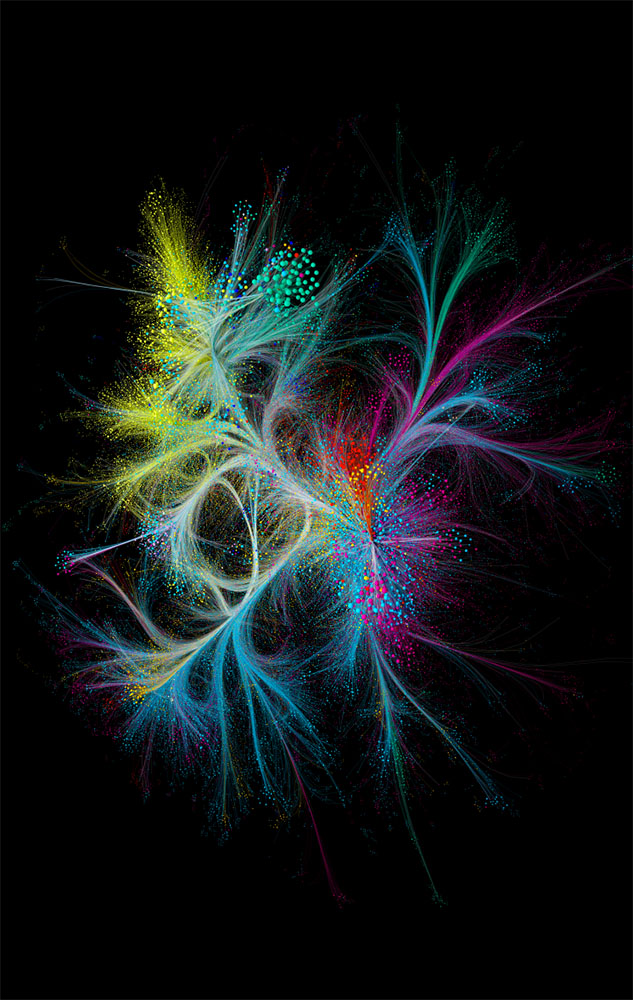
BarabásiLab
Hidden Patterns
The co-citation network for Nature: more than 88,000 papers published by the journal since 1900 are each represented by a dot, coloured by discipline. Papers are linked if another scientific paper (of those indexed in the Web of Science) cites both; the dot size reflects the number of these co-citation links.
Invisible, hidden connections and constantly repeating patterns within nature, society, language, and culture can not only be explored but also made visible. Barabási’s network approach promises to deliver a comprehensive, universal method that will illuminate many phenomena with scientific precision.

